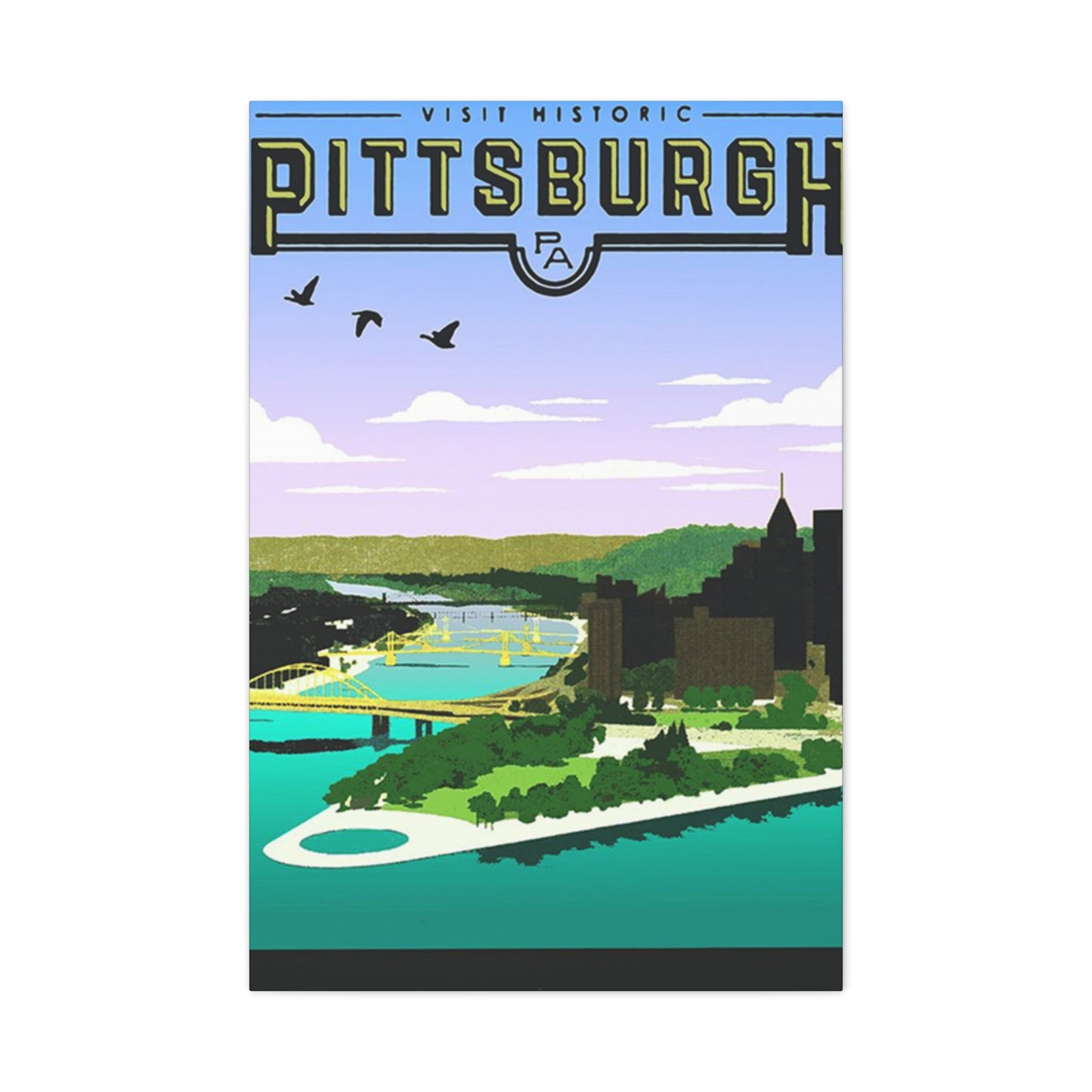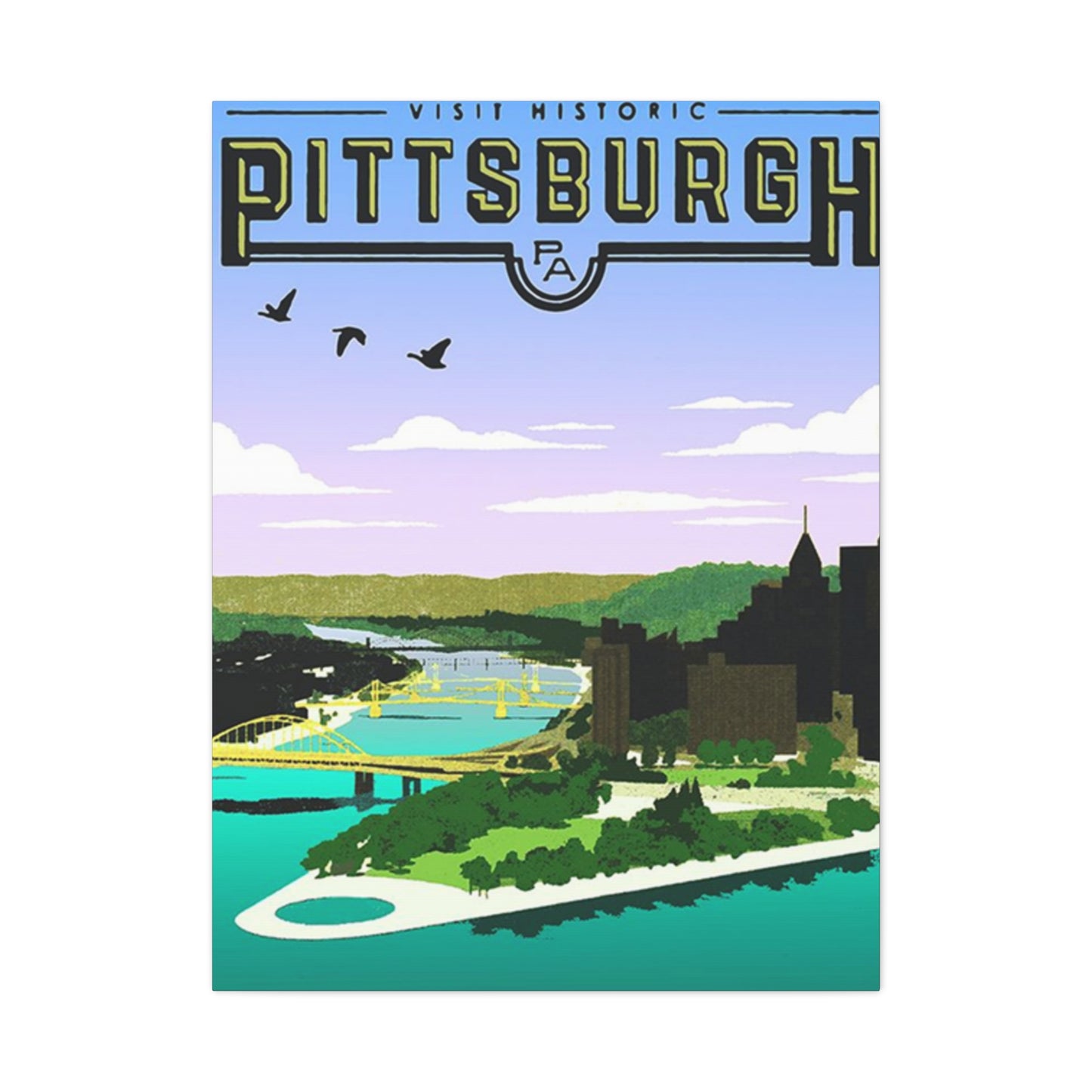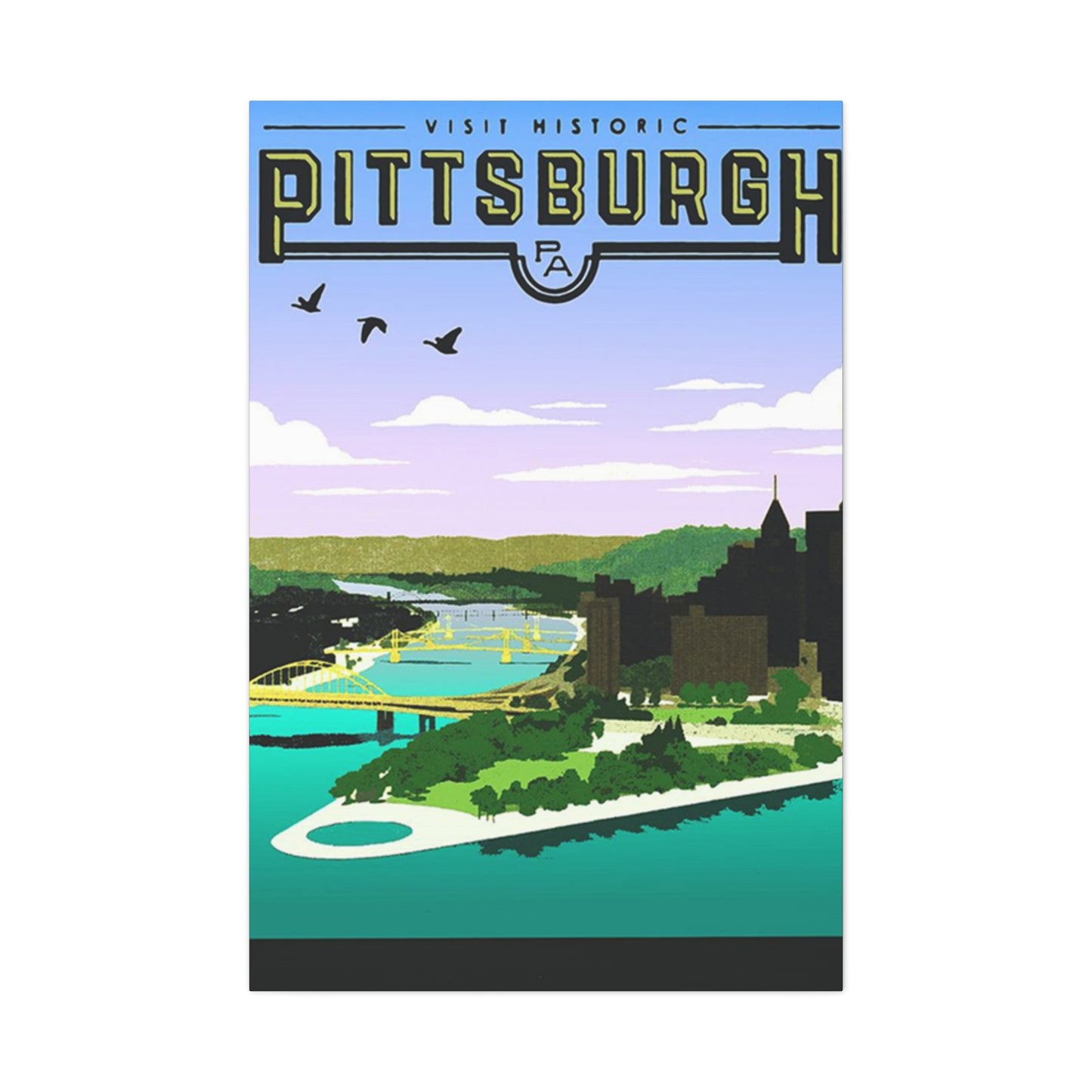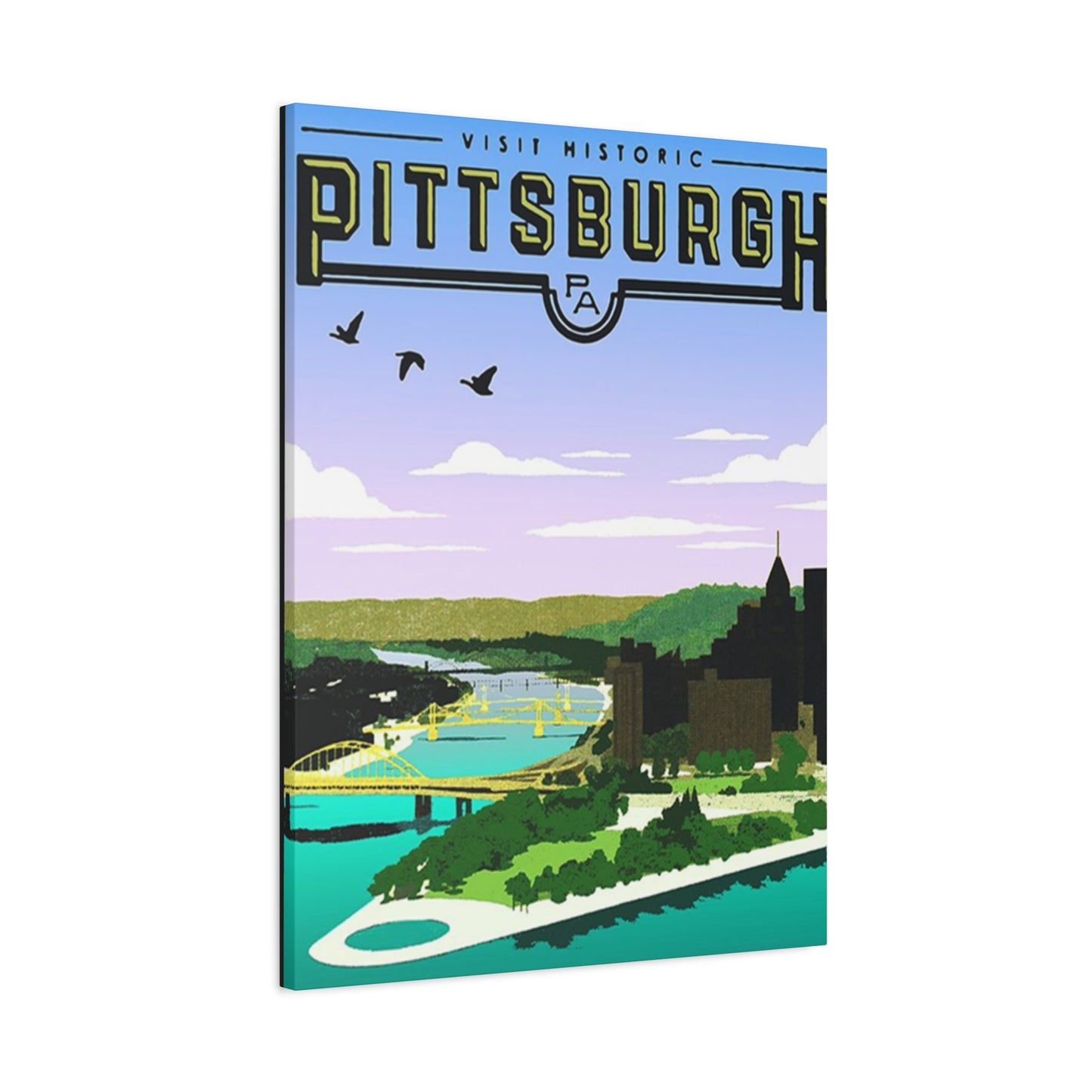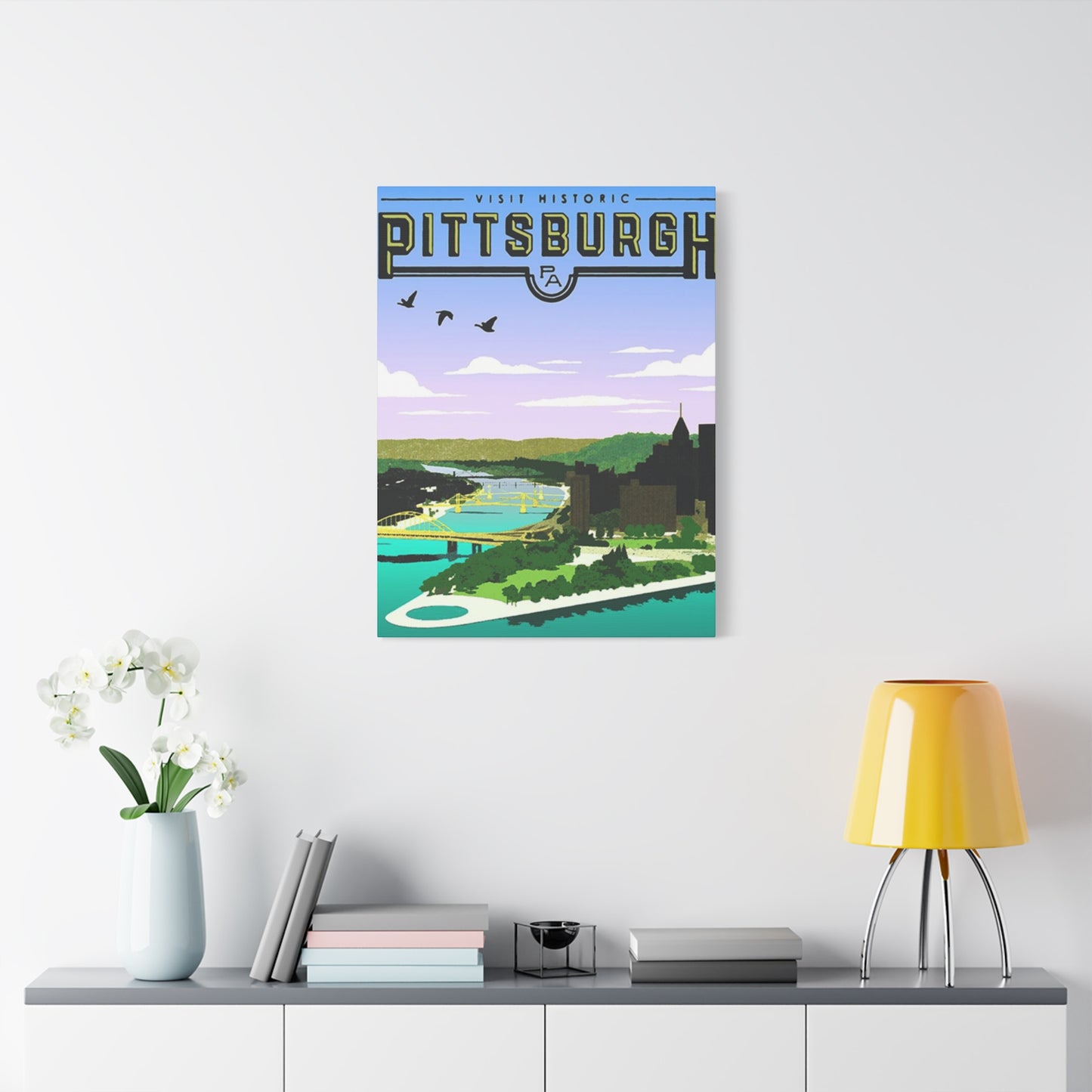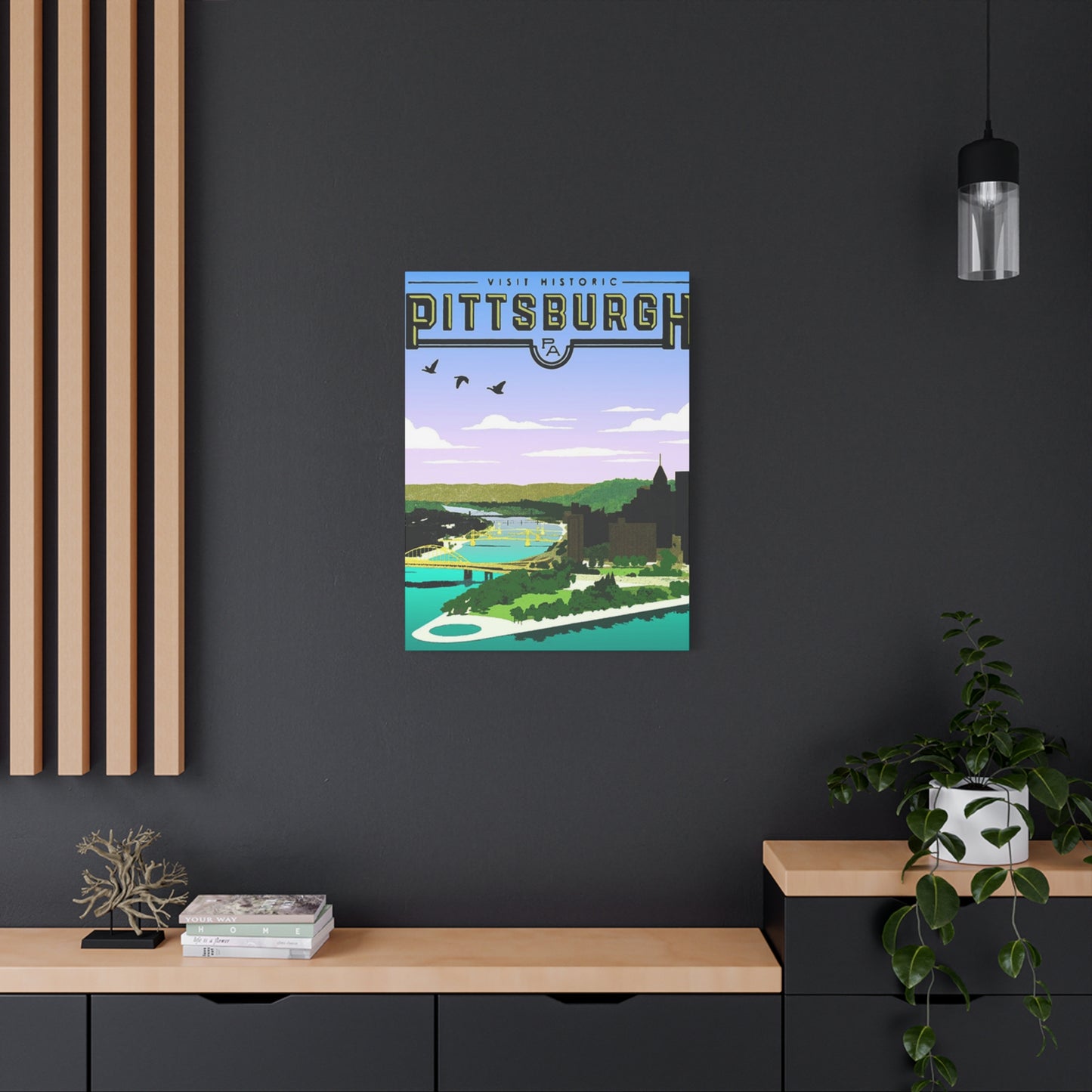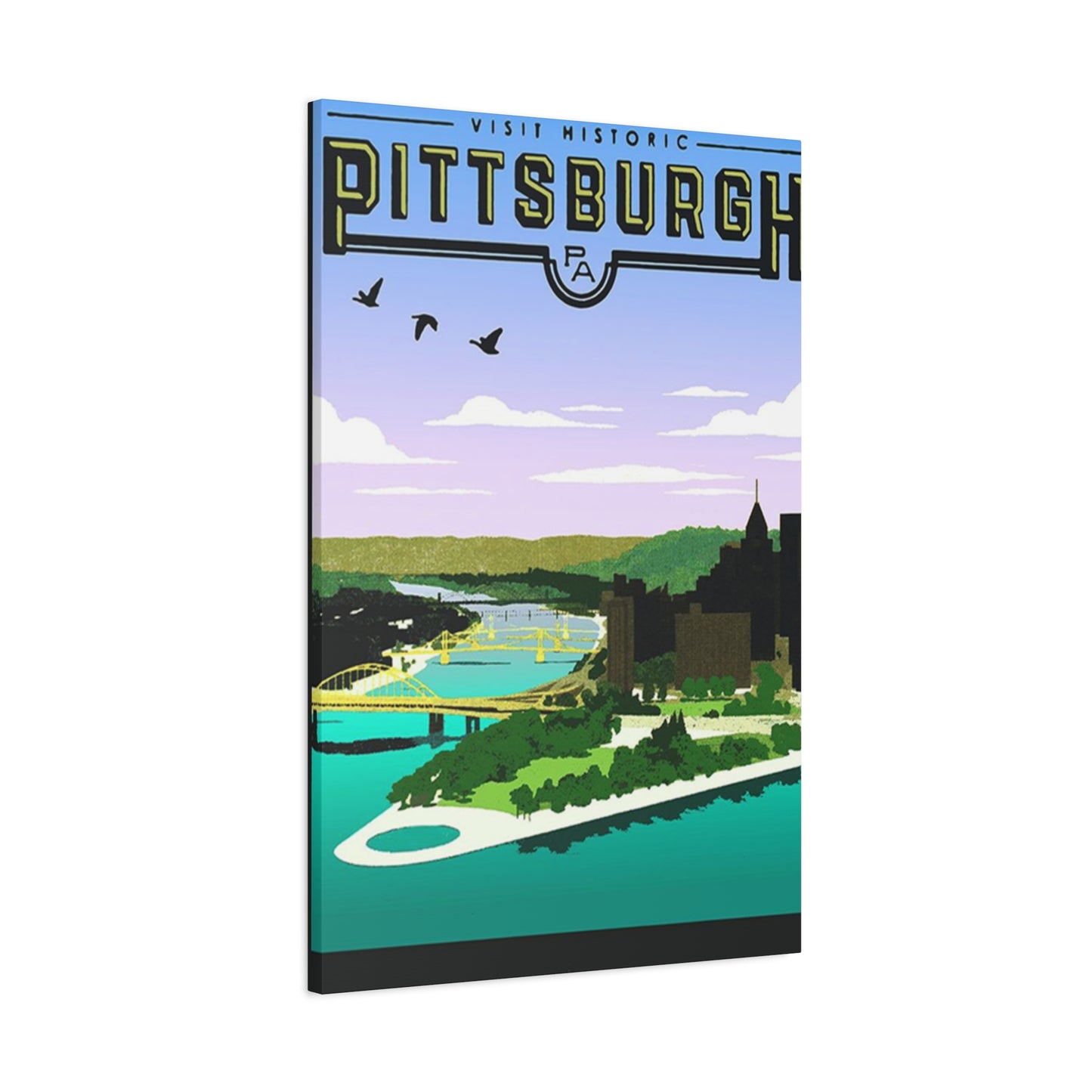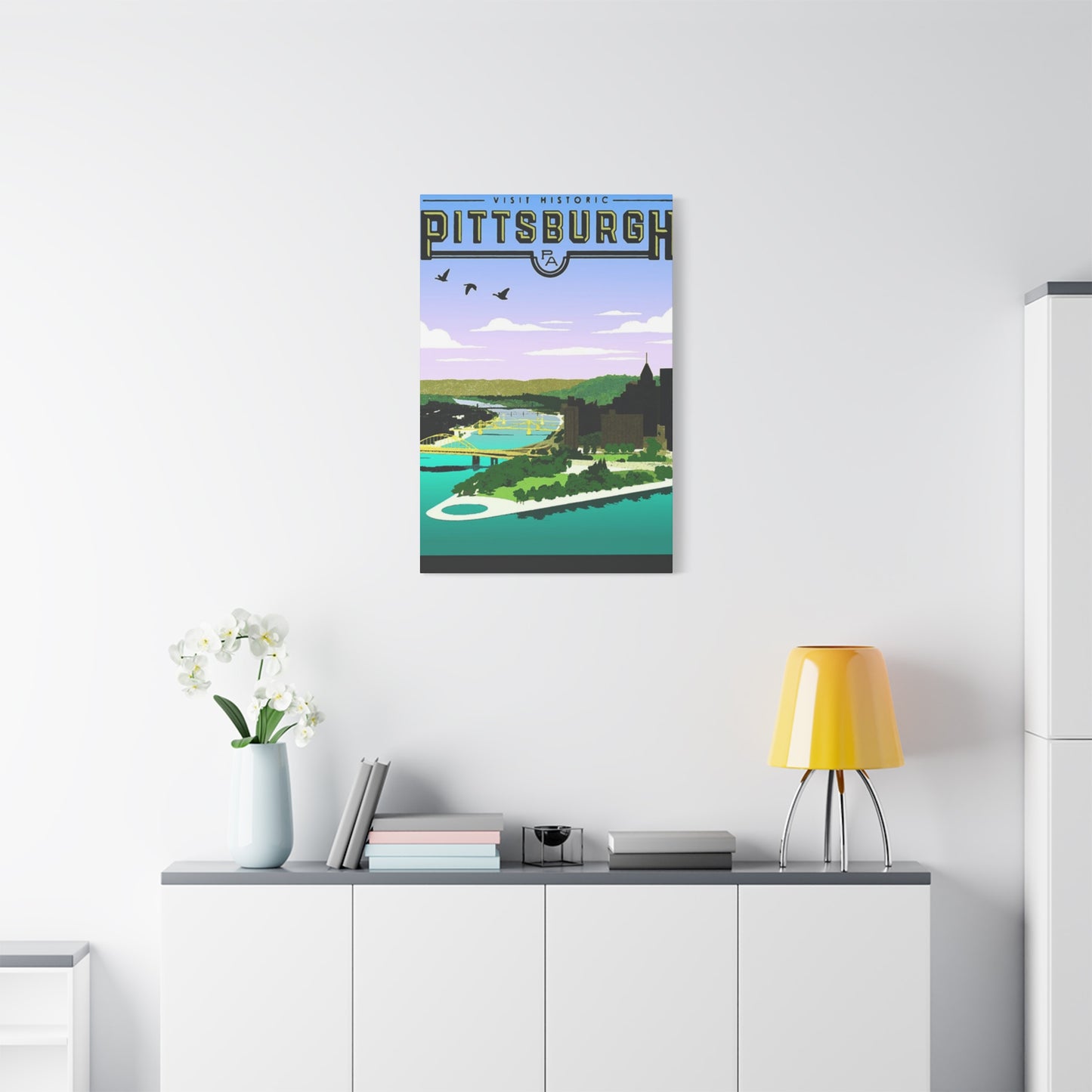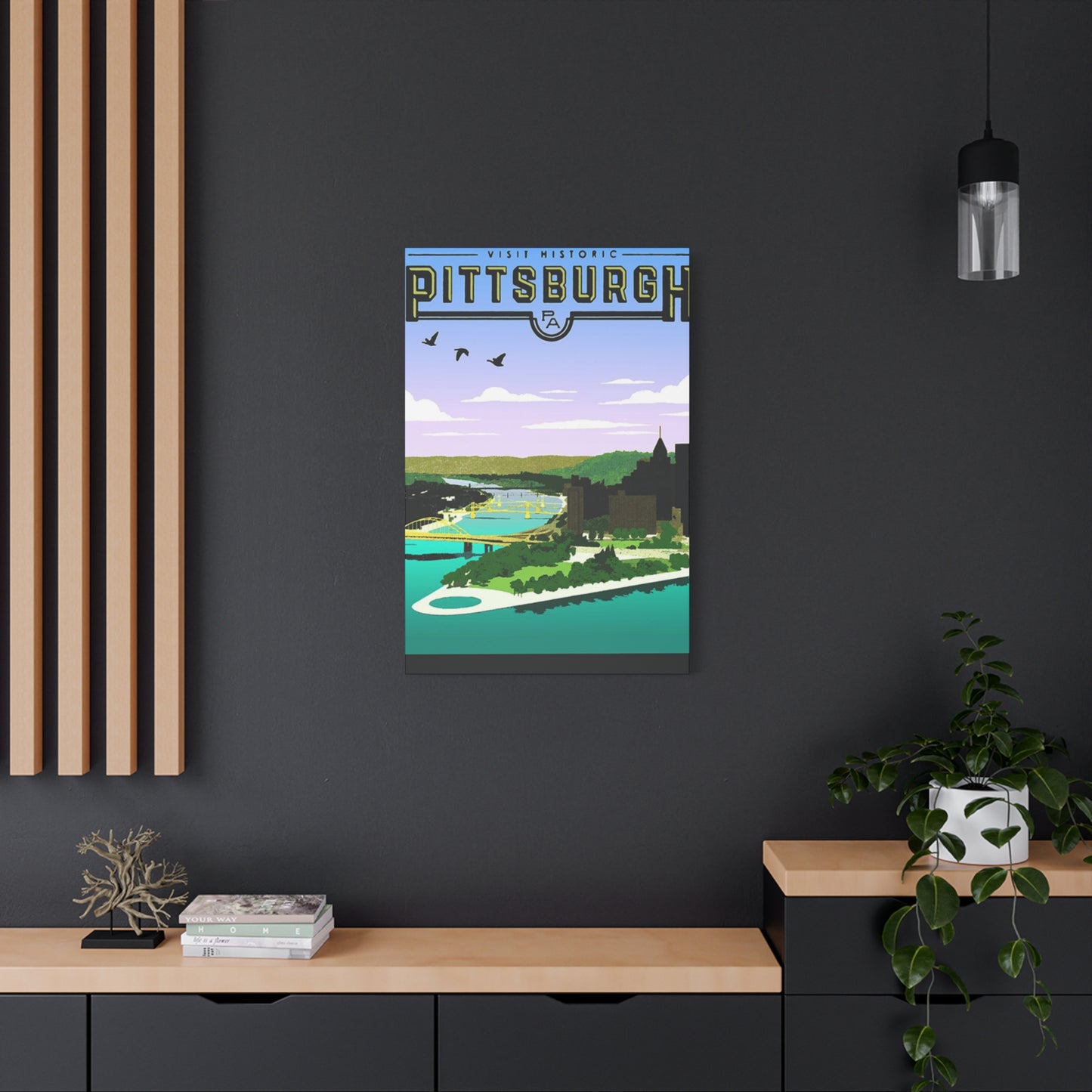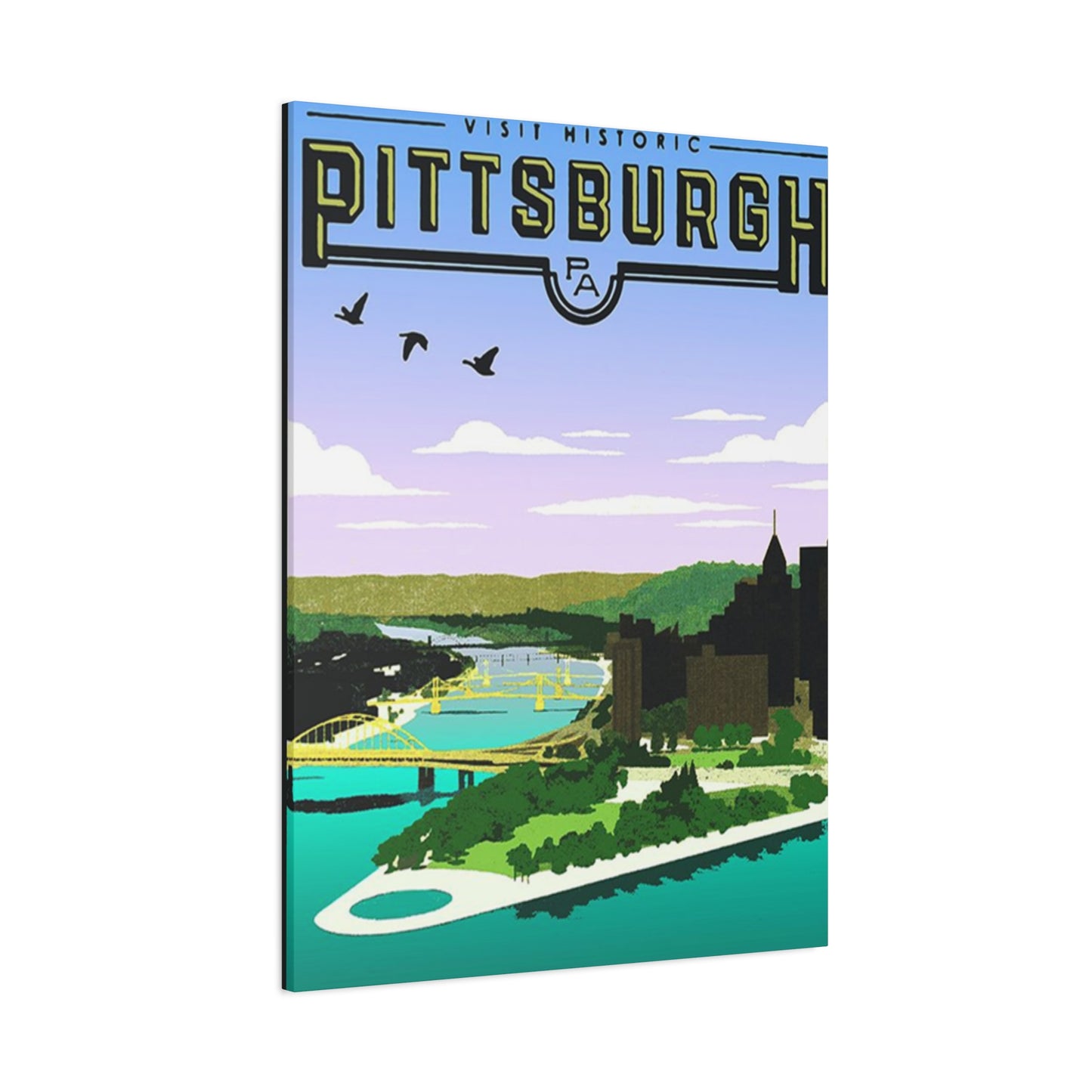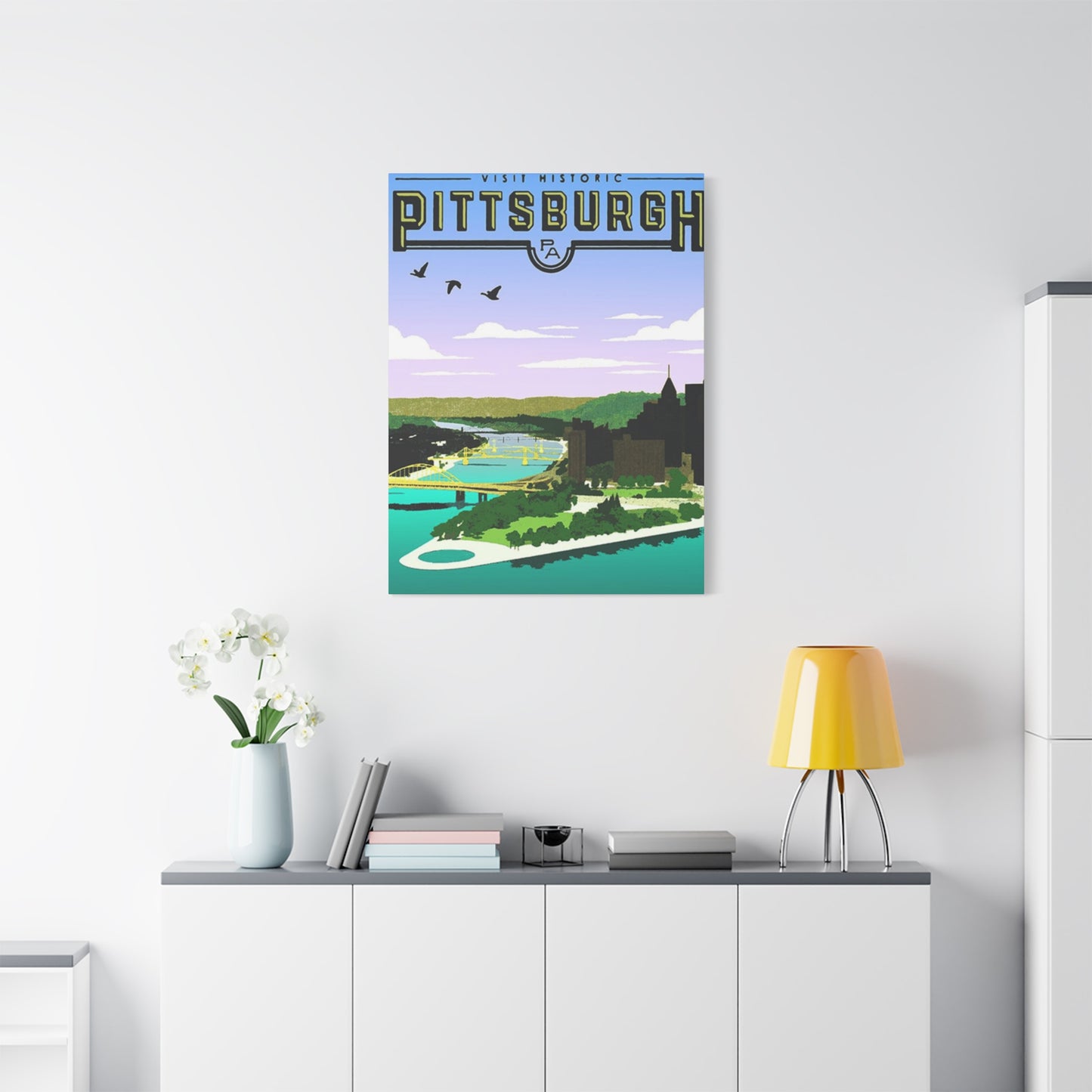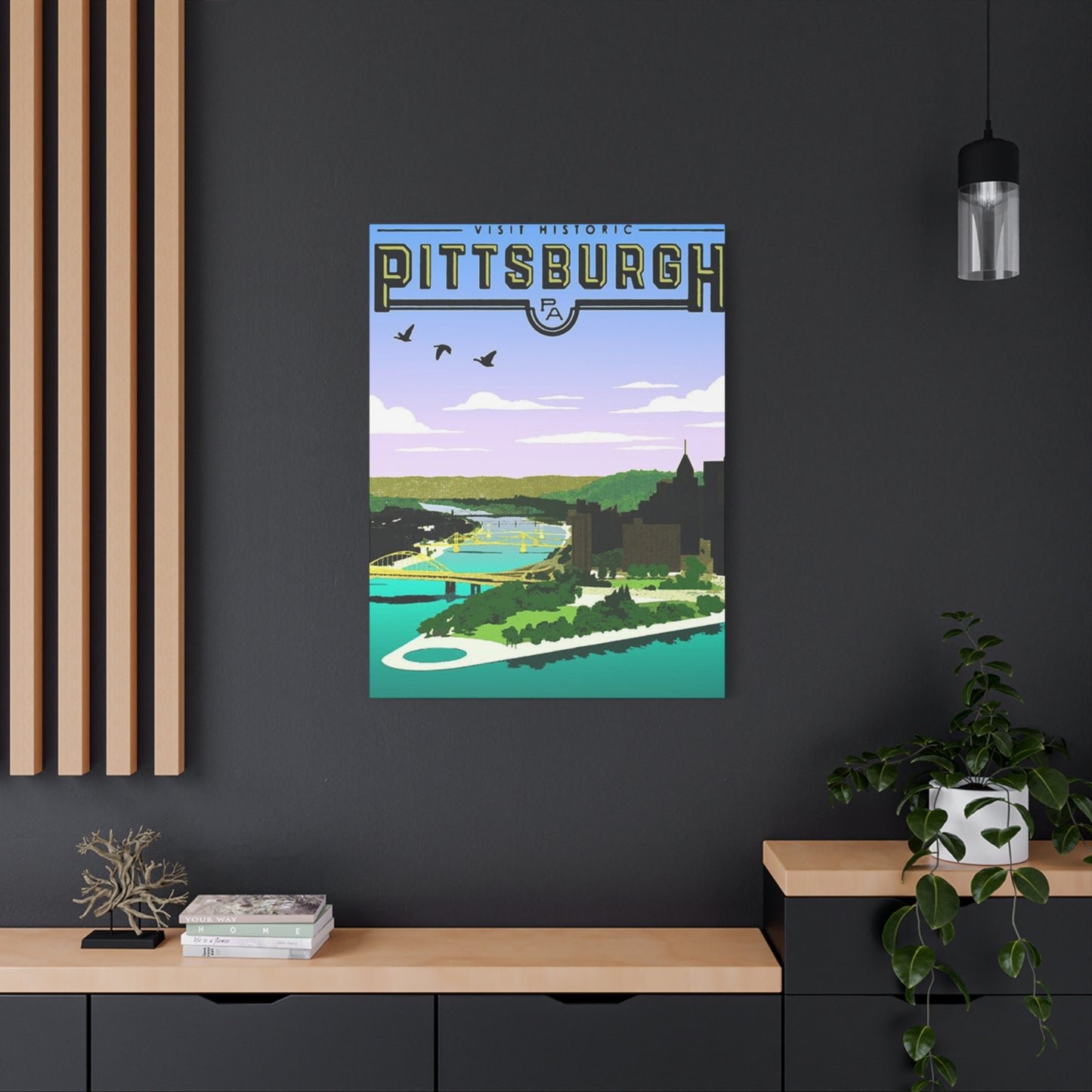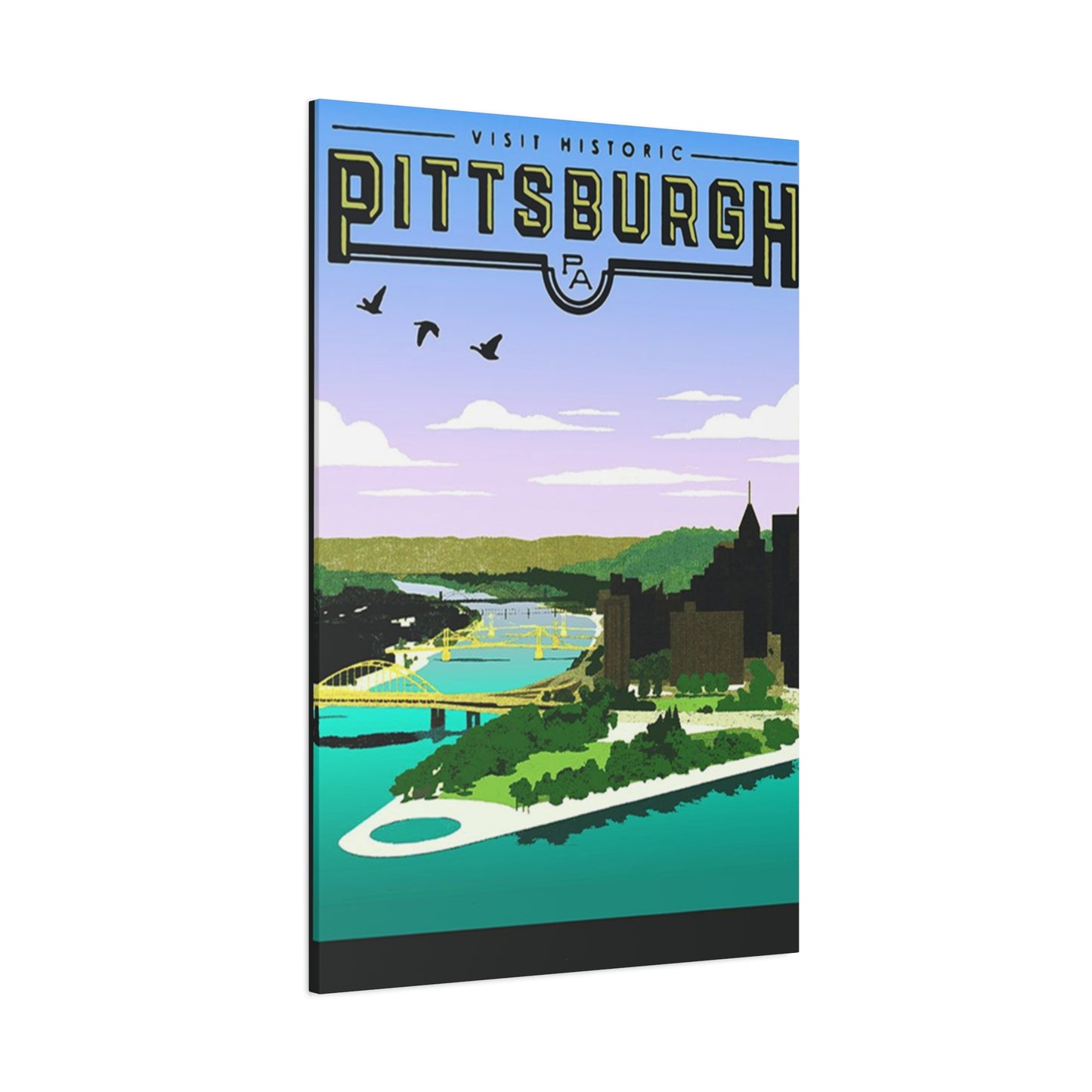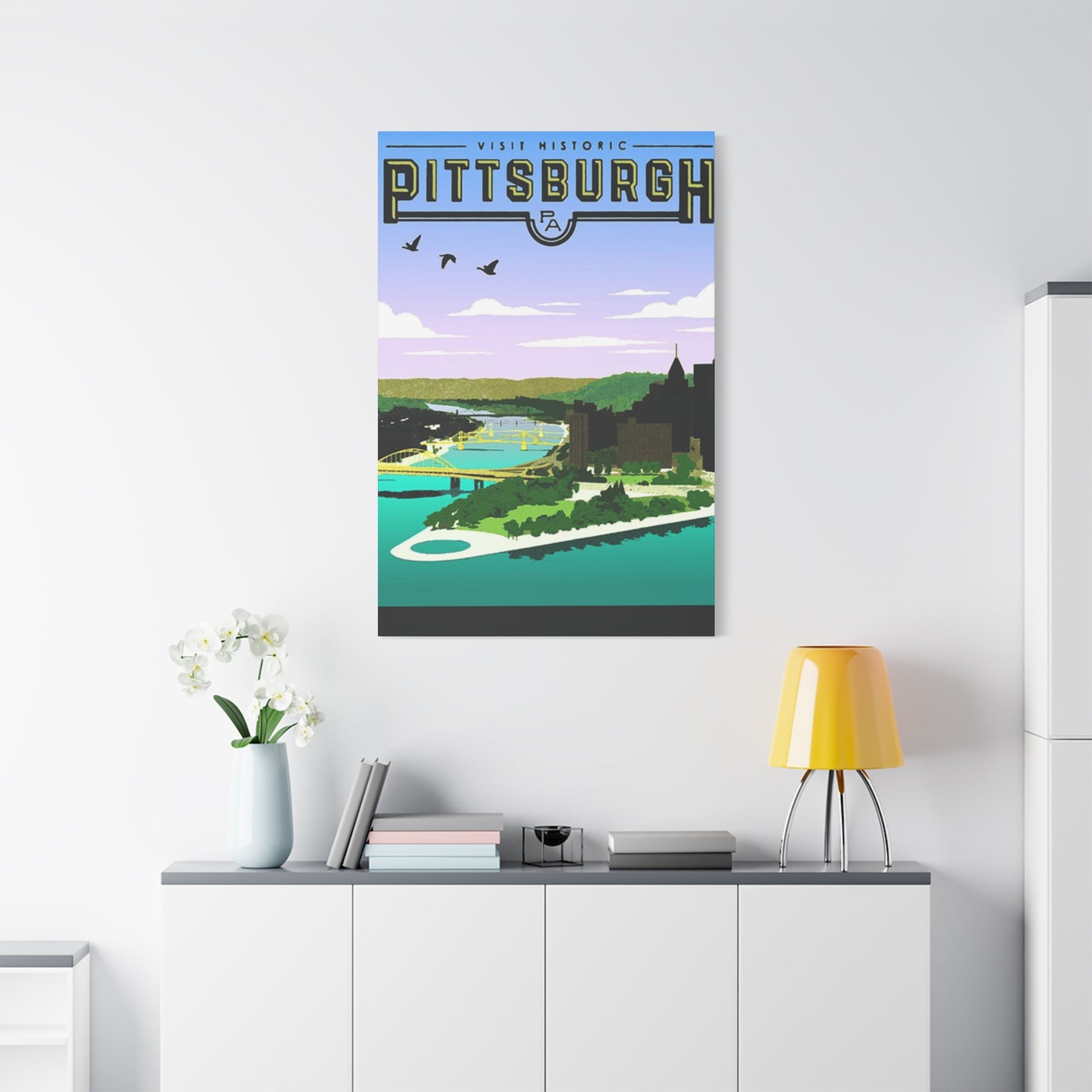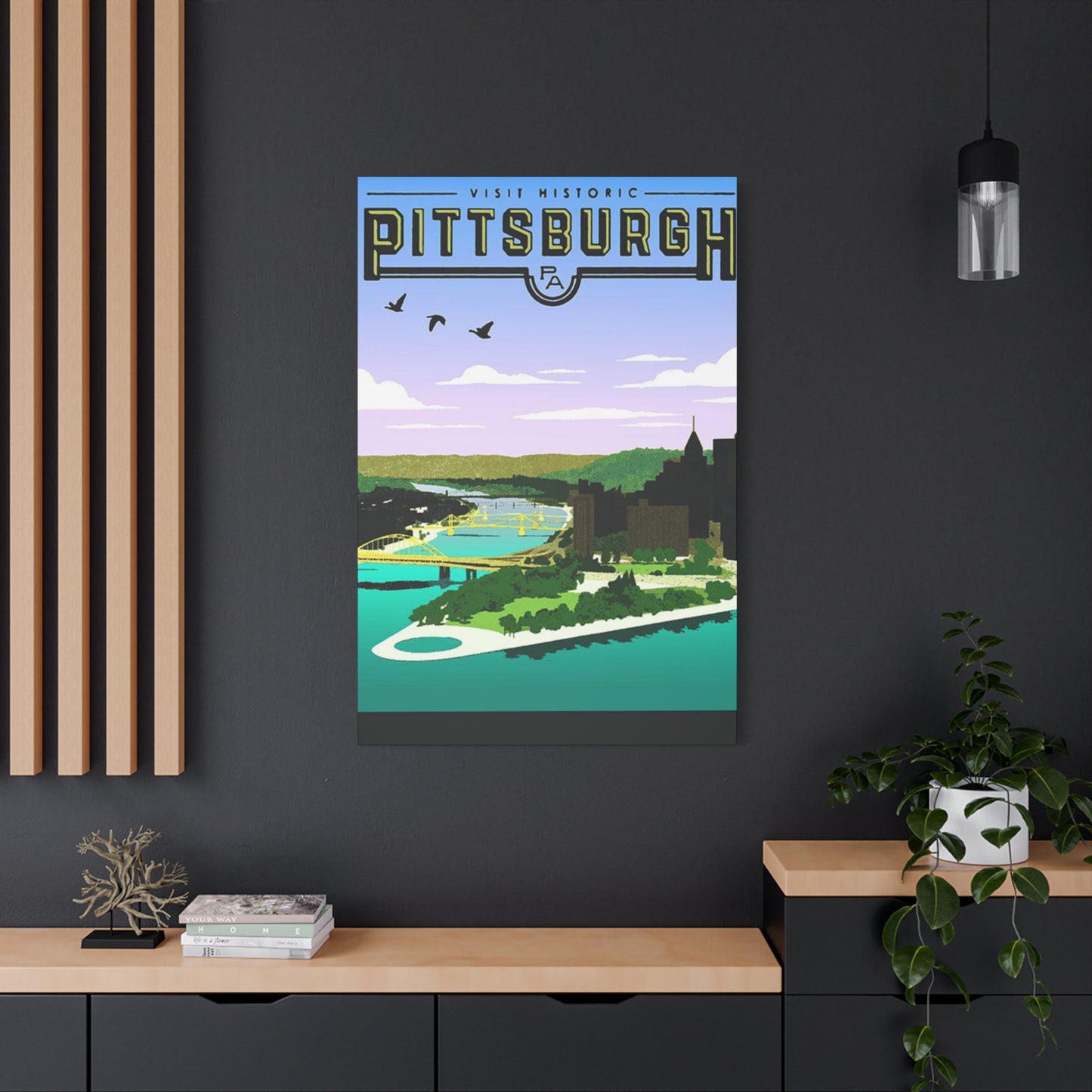Bridge Wall Art: Creative Ways to Showcase Urban Architecture in Your Home
Urban architecture has always fascinated art enthusiasts and homeowners alike, with bridges representing some of the most magnificent engineering marvels that connect communities and define city skylines. These structural masterpieces serve as powerful artistic subjects that can transform any living environment into a sophisticated gallery of metropolitan beauty. When incorporated into home decor, bridge imagery creates compelling focal points that celebrate human ingenuity while adding depth and character to residential environments.
The appeal of bridge-themed artwork extends far beyond mere aesthetic value, encompassing emotional resonance and symbolic meaning that speaks to our fundamental desire for connection and progress. These architectural wonders have inspired countless artists throughout history, resulting in diverse artistic interpretations that range from photorealistic representations to abstract conceptualizations. Whether capturing the majestic sweep of suspension cables or the geometric precision of truss work, bridge artwork offers endless possibilities for enhancing residential environments with meaningful visual narratives.
Contemporary homeowners increasingly seek artwork that reflects their appreciation for urban culture and architectural excellence, making bridge-themed pieces particularly relevant in today's design landscape. The versatility of bridge imagery allows for seamless integration into various decorating styles, from industrial lofts to traditional homes, providing artistic solutions that complement existing furnishings while creating engaging conversation pieces. This comprehensive exploration examines the multifaceted world of bridge-inspired artwork, offering insights into selection, styling, and creative implementation strategies for residential environments.
Stunning Bridge Photography for Wall Art
Photography serves as one of the most accessible and impactful mediums for capturing the architectural grandeur of bridges, offering viewers intimate perspectives on these monumental structures. Professional photographers have developed sophisticated techniques for documenting bridges that reveal both their structural complexity and aesthetic beauty, creating images that translate exceptionally well to residential display. The photographic medium allows for precise control over lighting, composition, and perspective, resulting in artwork that can dramatically enhance any room's visual appeal.
Contemporary bridge photography encompasses various approaches, from sweeping panoramic views that showcase entire bridge spans to detailed close-ups that highlight intricate engineering elements. Photographers often employ specialized equipment and techniques to capture bridges from unique vantage points, including drone photography that reveals previously inaccessible perspectives. These aerial viewpoints provide stunning bird's-eye views of bridge configurations, showcasing how these structures integrate with surrounding urban landscapes and natural features.
The technical aspects of bridge photography require careful consideration of lighting conditions, with many photographers preferring the golden hour periods just after sunrise or before sunset when warm light creates dramatic shadows and highlights structural details. Weather conditions play crucial roles in creating compelling bridge photography, with fog, rain, and snow adding atmospheric elements that enhance the emotional impact of the final images. Long exposure techniques capture the movement of traffic and water, creating dynamic visual effects that emphasize the functional nature of these architectural marvels.
Color photography of bridges often emphasizes the interplay between structural elements and their environmental contexts, showcasing how bridge materials interact with surrounding natural and urban elements. The contrast between industrial materials like steel and concrete against organic backgrounds creates visually striking compositions that work exceptionally well in residential settings. Professional photographers also experiment with various color treatments, from vibrant saturated palettes to subtle desaturated tones that complement different decorating schemes.
Digital processing techniques allow photographers to enhance bridge images in ways that maximize their visual impact when displayed as artwork. These post-processing methods can emphasize architectural details, adjust color balances to complement home decor, and create artistic effects that transform documentary photographs into compelling artistic statements. The availability of high-resolution digital printing technologies ensures that bridge photography can be reproduced at various scales, from intimate prints suitable for bedroom displays to large-scale installations appropriate for living rooms and public areas.
When selecting bridge photography for residential display, consider factors such as the image's emotional tone, color palette compatibility with existing decor, and the scale requirements of the intended installation area. High-quality bridge photography should demonstrate technical excellence while conveying the photographer's artistic vision, resulting in images that remain visually engaging over extended periods. The best bridge photography balances documentary accuracy with artistic interpretation, creating images that educate viewers about architectural details while providing lasting aesthetic pleasure.
Artistic Interpretations of Iconic Bridges
Artists throughout history have found endless inspiration in bridge architecture, creating interpretive works that go beyond literal representation to explore the symbolic and emotional significance of these structures. These artistic interpretations range from faithful architectural renderings to highly stylized abstractions that capture the essence of bridge engineering through creative visual languages. Contemporary artists continue this tradition, employing various mediums and techniques to create bridge artwork that resonates with modern sensibilities while honoring the architectural heritage of these magnificent structures.
Traditional painting techniques have long been employed to interpret bridge architecture, with artists using oils, acrylics, and watercolors to capture both the physical presence and atmospheric qualities of these structures. Plein air painters often work directly at bridge locations, capturing the changing light conditions and environmental factors that influence how these structures appear throughout different times of day and seasons. Studio-based artists combine on-location sketches with photographic references to create more controlled interpretations that emphasize specific aspects of bridge design.
Mixed media approaches allow artists to incorporate actual bridge materials or related industrial elements into their compositions, creating tactile artworks that reference the physical reality of bridge construction. These works might include rust samples, cable fragments, or weathered metal pieces integrated into painted or collaged compositions. Such approaches create multi-dimensional artworks that engage viewers on both visual and tactile levels, providing rich sensory experiences that celebrate the materiality of bridge construction.
Contemporary digital artists have embraced technology to create innovative interpretations of bridge architecture, using software tools to manipulate and enhance bridge imagery in ways previously impossible. These digital manipulations can transform realistic bridge photographs into surreal artistic visions, applying effects that emphasize structural patterns, create impossible perspectives, or blend multiple bridge images into composite compositions. The flexibility of digital mediums allows artists to experiment with color, form, and composition in ways that push the boundaries of traditional bridge representation.
Sculptural interpretations of bridges offer three-dimensional approaches to celebrating these architectural marvels, creating artwork that can be displayed as standalone pieces or integrated into larger environmental installations. These sculptures might abstract bridge forms into essential geometric elements, use bridge materials in new configurations, or create miniature versions that capture the essence of larger structures. Such approaches allow viewers to experience bridge architecture from new perspectives while appreciating the fundamental engineering principles that make these structures possible.
Installation artists have created immersive environments inspired by bridge architecture, using light, sound, and spatial elements to recreate the experience of bridge traversal within gallery and residential contexts. These installations might project bridge images onto room surfaces, create sound environments that evoke the acoustic qualities of bridge environments, or use structural elements to suggest the physical experience of being on or under a bridge. Such approaches transform static artworks into dynamic experiences that engage multiple senses.
The interpretation of iconic bridges through various artistic mediums provides homeowners with diverse options for incorporating bridge-themed artwork into their living environments. These artistic approaches offer alternatives to direct photographic representation, allowing for more abstract or stylized treatments that might better complement specific decorating schemes or personal aesthetic preferences. The key to successful artistic interpretation lies in maintaining enough recognizable elements to preserve the bridge's essential character while allowing creative freedom to enhance emotional and visual impact.
Modern vs. Classic Bridge Wall Art Styles
The distinction between modern and classic bridge artwork styles reflects broader trends in artistic expression and architectural appreciation, offering homeowners diverse aesthetic approaches to celebrating these engineering marvels. Classic bridge artwork typically emphasizes traditional artistic techniques and romantic interpretations that highlight the historical significance and timeless beauty of these structures. Modern approaches tend toward minimalist aesthetics, contemporary materials, and innovative presentation methods that align with current design sensibilities.
Classic bridge artwork often employs traditional mediums such as oil paintings, watercolors, and detailed architectural drawings that showcase the craftsmanship and historical context of bridge construction. These works frequently adopt romantic or picturesque approaches that emphasize the relationship between bridges and their natural or urban environments. Classic treatments might include dramatic lighting effects, detailed architectural ornamentations, and compositional approaches that reference historical painting traditions. Such artwork often appeals to viewers who appreciate traditional craftsmanship and historical continuity.
The color palettes associated with classic bridge artwork tend toward earth tones, muted colors, and traditional harmonies that create timeless aesthetic appeal. These works often incorporate atmospheric effects such as morning mist, sunset lighting, or seasonal changes that add emotional depth and temporal context to the bridge representations. Classic bridge artwork frequently includes surrounding environmental details that place the structures within broader landscape contexts, creating comprehensive scenes that tell stories about place and time.
Modern bridge artwork embraces contemporary aesthetic principles including minimalism, geometric abstraction, and innovative material applications that reflect current design philosophies. These works often strip away extraneous details to focus on essential structural elements, creating clean compositions that emphasize form, line, and spatial relationships. Modern approaches might employ unconventional materials, digital mediums, or experimental techniques that challenge traditional representation methods.
Contemporary color treatments in modern bridge artwork often favor bold contrasts, monochromatic schemes, or unexpected color combinations that create visual impact and complement modern residential environments. These works might emphasize single structural elements such as cable patterns, arch forms, or geometric details rather than attempting comprehensive bridge representations. Modern bridge artwork frequently explores the relationship between positive and negative space, using minimalist compositions to create maximum visual impact.
The presentation methods for modern bridge artwork often involve innovative framing solutions, unconventional display arrangements, or integration with contemporary home technologies. These might include frameless mounting systems, LED backlighting, or digital display technologies that allow for changing image presentations. Modern approaches also embrace series presentations, where multiple related images create comprehensive artistic statements through coordinated displays.
Scale considerations differ significantly between classic and modern bridge artwork approaches. Classic works often favor traditional proportions that complement conventional furniture arrangements and room layouts. Modern approaches might embrace oversized formats that create dramatic architectural elements within residential environments, or conversely, adopt minimal scales that function as subtle accent pieces. The choice between modern and classic approaches should align with overall home decorating philosophies and personal aesthetic preferences.
When selecting between modern and classic bridge artwork styles, consider factors such as existing furniture styles, architectural elements of the home, and personal preferences regarding artistic expression. Classic approaches work well in traditional homes with established decorating schemes, while modern approaches complement contemporary residential environments and minimalist design philosophies. The most successful installations often maintain consistency between artwork style and overall environmental aesthetics.
Black and White Bridge Wall Art Ideas
Monochromatic bridge artwork offers timeless elegance and versatility that complements diverse decorating schemes while emphasizing the architectural and structural elements that make bridges compelling artistic subjects. The absence of color forces viewers to focus on form, texture, composition, and tonal relationships, creating powerful visual statements that transcend temporal design trends. Black and white bridge artwork provides sophisticated aesthetic solutions that work equally well in traditional and contemporary residential environments.
The photographic medium particularly excels in black and white bridge representation, with high contrast monochromatic images revealing structural details and atmospheric qualities that might be overlooked in color versions. Professional photographers often specifically compose bridge images with black and white presentation in mind, utilizing dramatic lighting conditions and compositional techniques that maximize tonal impact. Long exposure techniques create ethereal effects in monochromatic bridge photography, with moving elements such as water and clouds rendered as smooth, flowing forms that contrast with sharp architectural details.
Fine art photography approaches to black and white bridge imagery often emphasize artistic interpretation over documentary accuracy, using contrast manipulation, selective focus, and creative cropping to enhance emotional impact. These works might isolate specific bridge elements such as cable patterns, arch geometries, or structural details, creating abstract compositions that celebrate engineering aesthetics. The flexibility of black and white processing allows photographers to create various mood interpretations from single source images, ranging from high contrast dramatic presentations to subtle tonal gradations.
Traditional drawing and etching techniques have historically produced exceptional black and white bridge artwork, with detailed architectural renderings showcasing both artistic skill and engineering appreciation. Contemporary artists continue these traditions while incorporating modern tools and techniques, creating bridge drawings that combine classical draftsmanship with contemporary aesthetic sensibilities. These works often emphasize line quality, textural variety, and spatial depth through carefully controlled tonal relationships.
Printmaking techniques including lithography, woodcuts, and screen printing offer unique approaches to creating black and white bridge artwork with distinctive aesthetic qualities. Each printmaking method creates characteristic textures and visual effects that can enhance the representation of bridge materials and structural elements. Limited edition prints created through these traditional methods often possess collectible value while providing accessible options for incorporating fine art into residential environments.
Digital manipulation of bridge imagery allows artists to explore creative black and white interpretations that push beyond traditional photographic and drawing approaches. These might include high contrast posterization effects, selective colorization within monochromatic compositions, or composite images that combine multiple bridge elements. Digital techniques also enable precise control over tonal relationships and detail emphasis, allowing artists to create black and white bridge artwork optimized for specific display requirements.
The versatility of black and white bridge artwork makes it particularly suitable for creating cohesive gallery arrangements that span multiple rooms or areas within residential environments. Monochromatic pieces can be successfully combined regardless of their specific subject matter, creating unified visual themes that celebrate bridge architecture while maintaining decorative consistency. This approach allows homeowners to develop comprehensive bridge-themed decorating schemes that evolve over time through selective additions.
When selecting black and white bridge artwork, consider factors such as tonal range, contrast levels, and detail emphasis to ensure compatibility with intended display environments. High contrast images work well in brightly lit areas and complement bold decorating schemes, while subtle tonal gradations suit intimate environments and sophisticated aesthetic approaches. The scale and framing of black and white bridge artwork should complement the architectural features of display areas while maintaining appropriate visual proportions.
Watercolor Paintings of City Bridges
Watercolor painting techniques offer unique artistic possibilities for interpreting bridge architecture, creating fluid, atmospheric representations that capture both structural details and environmental contexts. The transparent nature of watercolor mediums allows artists to build complex tonal relationships and color interactions that effectively convey the relationship between bridges and their surrounding urban or natural environments. These paintings often possess an immediacy and emotional directness that distinguishes them from other artistic mediums.
Traditional watercolor approaches to bridge painting emphasize spontaneity and atmospheric effects, with artists working quickly to capture changing light conditions and environmental factors. The unpredictable nature of watercolor techniques can create happy accidents that enhance the artistic interpretation of bridge subjects, resulting in unique effects that would be difficult to achieve through more controlled mediums. Experienced watercolor artists learn to embrace and direct these spontaneous qualities, creating bridge paintings that balance controlled architectural accuracy with expressive artistic freedom.
Contemporary watercolor artists often combine traditional techniques with modern approaches, using masking fluids, salt effects, and mixed media elements to create innovative interpretations of bridge architecture. These contemporary methods might emphasize abstract qualities while maintaining recognizable bridge elements, creating artwork that functions both as architectural documentation and artistic expression. The incorporation of other mediums such as pen and ink, charcoal, or digital elements can enhance the expressive range of watercolor bridge paintings.
The color possibilities inherent in watercolor mediums allow artists to explore various interpretive approaches to bridge representation, from naturalistic color schemes that document actual bridge appearances to expressive color treatments that emphasize emotional or symbolic content. Atmospheric effects such as fog, rain, or sunset lighting can be particularly effective in watercolor bridge paintings, creating mood and temporal context that enhance the artistic impact of the work. The transparency of watercolor layers enables subtle color interactions that create depth and visual interest.
Urban bridge subjects provide excellent opportunities for watercolor artists to explore the relationship between architectural structures and city environments, with the fluid nature of the medium effectively capturing the dynamic qualities of metropolitan life. These paintings might emphasize the contrast between hard architectural elements and soft environmental factors such as sky, water, and vegetation. The watercolor medium excels at representing reflective surfaces, making it particularly suitable for bridge paintings that include water elements.
Technical considerations for watercolor bridge paintings include paper selection, color mixing strategies, and compositional planning that accommodates the medium's characteristics. High-quality watercolor papers provide appropriate texture and absorbency for creating detailed architectural elements while supporting atmospheric washes. Color mixing techniques must account for the transparency and flow characteristics of watercolor pigments, particularly when rendering metallic bridge materials and structural details.
The archival qualities of professional watercolor materials ensure that bridge paintings created with appropriate techniques and materials will maintain their visual integrity over extended periods. Proper framing with UV-protective glass helps preserve color saturation and prevents fading, making watercolor bridge paintings suitable for long-term residential display. The relatively intimate scale typical of watercolor works makes them particularly appropriate for residential environments where larger artwork might overwhelm room proportions.
Collecting watercolor bridge paintings offers opportunities to support living artists while acquiring unique artistic interpretations that cannot be exactly reproduced. Original watercolor works possess individual characteristics that distinguish them from print reproductions, providing homeowners with authentic artistic experiences. The accessibility of watercolor techniques also makes this medium suitable for homeowners interested in creating their own bridge-themed artwork through classes or self-directed study.
Abstract Bridge Art for Urban Environments
Abstract interpretations of bridge architecture offer sophisticated artistic solutions that celebrate engineering aesthetics while complementing contemporary residential design philosophies. These works distill bridge forms into essential visual elements, emphasizing color, line, shape, and spatial relationships rather than literal representation. Abstract bridge artwork provides opportunities for personal interpretation and emotional response while maintaining connections to architectural inspiration sources.
Geometric abstraction approaches to bridge artwork focus on the mathematical and structural principles underlying bridge design, creating compositions that celebrate engineering logic through artistic expression. These works might isolate specific structural elements such as cable patterns, truss geometries, or arch forms, translating them into purely visual compositions that emphasize rhythm, proportion, and spatial dynamics. The resulting artwork maintains intellectual connections to bridge architecture while functioning as independent aesthetic experiences.
Color field approaches to abstract bridge art emphasize atmospheric and emotional qualities rather than structural details, using large areas of color and subtle tonal relationships to evoke the experience of bridge environments. These works might capture the feeling of crossing a bridge, the visual impact of bridge lighting, or the emotional resonance of these connecting structures. The absence of literal representation allows viewers to project personal associations and memories onto the artwork.
Mixed media abstract bridge artwork combines various materials and techniques to create textural and dimensional effects that reference the physical reality of bridge construction. These works might incorporate actual bridge materials, industrial elements, or related objects that create tactile connections to bridge architecture. The combination of different materials and techniques can create rich sensory experiences that engage viewers on multiple levels while maintaining abstract aesthetic approaches.
Dynamic abstraction emphasizes movement and energy associated with bridge functions, creating compositions that suggest traffic flow, structural stress, or environmental interactions. These works might use gestural mark-making, fluid paint applications, or kinetic elements to convey the active qualities of bridge environments. The resulting artwork captures the functional essence of bridges while translating it into purely visual experiences.
Digital abstract interpretations of bridge architecture utilize software tools to create innovative compositions that would be impossible through traditional mediums. These works might manipulate bridge photographs into abstract compositions, generate algorithmic interpretations of bridge geometries, or combine multiple bridge elements into composite abstract images. The flexibility of digital mediums enables precise control over color, form, and composition while supporting experimental approaches to bridge interpretation.
Series approaches to abstract bridge artwork create comprehensive artistic statements through multiple related pieces that can be displayed together or separately. These series might explore different aspects of bridge architecture, various abstract interpretation methods, or evolutionary developments of single bridge subjects. The series format provides opportunities for creating substantial visual impact through coordinated installations while offering flexibility in display arrangements.
Contemporary urban environments particularly benefit from abstract bridge artwork that complements architectural features and design philosophies common in modern residential developments. The clean lines, geometric emphasis, and sophisticated color relationships typical of abstract bridge art align well with contemporary furniture styles and minimalist decorating approaches. These works provide visual interest and cultural connection without overwhelming residential environments with literal architectural imagery.
When selecting abstract bridge artwork for urban residential environments, consider factors such as color relationships with existing decor, scale requirements for intended display areas, and the level of abstraction that aligns with personal aesthetic preferences. Some viewers prefer abstract works that maintain recognizable bridge elements, while others appreciate complete departure from literal representation. The most successful abstract bridge artwork maintains enough visual interest and complexity to support extended viewing while complementing overall environmental aesthetics.
Bridges at Night: Capturing City Lights
Nocturnal bridge photography and artwork present unique opportunities for creating dramatic visual statements that emphasize the relationship between architectural structures and urban lighting environments. Night scenes transform bridge architecture through artificial illumination, creating entirely different aesthetic experiences compared to daylight representations. These works often possess cinematic qualities that add sophistication and metropolitan atmosphere to residential environments.
Professional night photography of bridges requires specialized techniques and equipment to capture both architectural details and lighting effects effectively. Long exposure methods allow photographers to record light trails from vehicle traffic, creating dynamic linear elements that complement bridge structures while conveying functional activity. The contrast between illuminated bridge elements and dark sky backgrounds creates powerful graphic compositions that translate exceptionally well to large-scale residential displays.
Bridge illumination systems themselves have become increasingly sophisticated, with many modern bridges featuring programmable LED lighting that can create various color schemes and dynamic effects. These lighting installations provide rich source material for artists and photographers, offering opportunities to capture bridges in various atmospheric conditions that change throughout evenings and seasons. The interplay between architectural lighting and environmental factors such as fog, rain, or snow creates particularly compelling artistic opportunities.
Urban skyline contexts enhance the visual impact of nighttime bridge artwork, with city lights providing complementary illumination that creates comprehensive metropolitan scenes. These compositions often emphasize the role of bridges as connecting elements within larger urban systems, showcasing how these structures integrate with surrounding architectural and infrastructure elements. The complexity of urban lighting provides rich textural and color opportunities for artistic interpretation.
Reflection effects in water surfaces double the visual impact of illuminated bridges, creating symmetrical compositions that emphasize both architectural forms and lighting effects. These reflective elements add depth and visual complexity to nighttime bridge artwork while creating opportunities for artistic manipulation through ripple effects, color saturation adjustments, and compositional cropping. The mirror-like qualities of calm water can create surreal effects that enhance the artistic impact of bridge representations.
Color temperature variations in different lighting sources create opportunities for artistic interpretation and mood enhancement in nighttime bridge artwork. The warm tones of traditional incandescent lighting contrast with the cool tones of LED systems and fluorescent sources, creating color relationships that can be emphasized or modified through artistic processing. These color variations contribute to the atmospheric qualities that make nighttime bridge artwork particularly effective in residential display.
Time-lapse techniques reveal the temporal qualities of bridge illumination, showing how lighting conditions change throughout evening hours as traffic patterns shift and environmental conditions evolve. While individual frames from time-lapse sequences can function as static artwork, the concept of temporal change can inform artistic interpretations that suggest movement and evolution within static compositions. These approaches create artwork that implies narrative and temporal development.
Digital enhancement techniques allow artists to optimize nighttime bridge imagery for residential display, adjusting contrast levels, color saturation, and detail emphasis to create maximum visual impact. These processing methods can emphasize specific lighting elements, enhance architectural details that might be obscured in original photographs, or create artistic effects that transform documentary images into compelling artistic statements. The key lies in maintaining believable lighting relationships while enhancing artistic impact.
Contemporary homeowners often seek artwork that reflects urban sophistication and metropolitan culture, making nighttime bridge imagery particularly relevant for modern residential environments. These works provide connections to city life and cultural vitality while offering sophisticated color palettes and dramatic compositions that complement contemporary decorating schemes. The cinematic qualities of nighttime bridge artwork create focal points that can anchor entire room designs around metropolitan themes.
Bridge Silhouettes as Minimalist Wall Decor
Silhouette representations of bridges offer elegant minimalist approaches to architectural artwork that emphasize pure form while eliminating distracting details. These simplified interpretations focus on essential structural profiles, creating clean compositions that complement contemporary decorating philosophies and provide versatile aesthetic solutions for various residential environments. The graphic quality of bridge silhouettes creates powerful visual statements through minimal means.
The creation of effective bridge silhouettes requires careful attention to profile selection and compositional balance, as these representations must convey structural character through outline alone. The most successful bridge silhouettes choose viewpoints that clearly reveal distinctive architectural features while maintaining overall compositional harmony. Suspension bridges, arch bridges, and cable-stayed designs each offer unique silhouette possibilities that can be exploited for maximum artistic impact.
Backlighting techniques in photography naturally create bridge silhouettes by exposing for bright sky conditions while allowing bridge structures to fall into shadow. Dawn and dusk periods provide ideal lighting conditions for creating dramatic silhouettes, with colorful sky backgrounds providing contrast and visual interest. These natural silhouette creation methods produce authentic lighting relationships that enhance the credibility and emotional impact of the final images.
Graphic design approaches to bridge silhouettes allow for precise control over form, proportion, and compositional relationships through digital creation methods. These approaches might combine multiple bridge elements, create idealized structural profiles, or develop entirely original bridge forms that capture essential architectural principles. The flexibility of digital creation enables perfect symmetry, optimal proportions, and precise integration with intended display environments.
Color applications in bridge silhouette artwork typically involve high contrast relationships between dark structural forms and lighter backgrounds, though contemporary approaches might experiment with reversed relationships or subtle color variations within silhouette forms. Monochromatic treatments often prove most effective for creating clean minimalist presentations, while selective color accents can provide visual interest without compromising the essential simplicity of silhouette approaches.
Scale considerations for bridge silhouettes range from intimate prints suitable for bedroom or office display to large-scale installations that function as architectural elements within residential environments. The clean graphic qualities of silhouette imagery scale effectively across various size requirements, maintaining visual impact and legibility regardless of display dimensions. Large-scale silhouette installations can create dramatic focal points that anchor entire room designs.
Series presentations of bridge silhouettes provide opportunities for comprehensive artistic statements while maintaining minimalist aesthetic principles. These might include multiple views of single bridges, collections of different bridge types, or evolutionary sequences showing structural variations. The graphic consistency inherent in silhouette approaches ensures visual harmony across multiple pieces while allowing for subtle variations in form and proportion.
Material considerations for displaying bridge silhouettes include framing choices that complement minimalist aesthetic principles, with simple profiles and high-quality materials enhancing rather than competing with artwork simplicity. Frameless mounting systems can emphasize the clean graphic qualities of silhouette imagery, while carefully selected frame profiles can provide necessary visual boundaries without overwhelming delicate compositions.
Contemporary residential environments often benefit from artwork that provides visual interest while maintaining uncluttered aesthetic approaches, making bridge silhouettes particularly suitable for modern homes and minimalist decorating schemes. These works offer sophisticated references to architectural achievement and urban culture while supporting clean environmental aesthetics. The versatility of silhouette approaches enables successful integration into diverse decorating contexts while maintaining distinctive artistic character.
The symbolic resonance of bridge silhouettes extends beyond mere aesthetic consideration, with these simplified forms suggesting themes of connection, progress, and human achievement that add conceptual depth to residential art collections. Viewers often project personal associations and memories onto these archetypal forms, creating emotional connections that enhance the long-term satisfaction derived from silhouette artwork. This combination of visual simplicity and conceptual richness makes bridge silhouettes particularly effective choices for residential display.
Architectural Drawings of Famous Bridges
Technical architectural drawings of renowned bridges serve dual purposes as both educational documents and sophisticated artwork that celebrates engineering achievement through precise visual communication. These detailed representations showcase the complexity and ingenuity inherent in bridge design while providing homeowners with intellectual artwork that stimulates curiosity and appreciation for human creative capabilities. Historical and contemporary architectural drawings offer rich source material for residential art collections.
Traditional architectural drawing techniques emphasize precision, clarity, and comprehensive documentation of structural systems, creating detailed representations that reveal engineering principles and construction methodologies. These drawings often include multiple views, sectional details, and dimensional information that provide complete understanding of bridge design approaches. The technical accuracy required for architectural drawings ensures that these works possess educational value alongside their aesthetic appeal.
Contemporary architectural visualization has embraced digital tools that enable unprecedented precision and visual sophistication in bridge representation, creating drawings that combine technical accuracy with artistic presentation. Computer-aided design software allows architects and artists to create perfectly scaled drawings with complex detail resolution and sophisticated rendering effects. These digital approaches can produce architectural drawings that function effectively as both technical documents and artistic statements.
Historical bridge drawings provide fascinating insights into engineering evolution and design philosophy development, showcasing how bridge construction techniques and aesthetic approaches have evolved over time. Original architectural drawings from famous bridge projects possess particular cultural and historical significance, representing primary source documents that record human creative achievement. Reproduction prints of historical drawings make these significant works accessible for residential display.
The presentation of architectural bridge drawings requires careful consideration of scale, detail resolution, and viewing distance to ensure that technical information remains legible while maintaining overall compositional impact. Large format presentations often work best for architectural drawings, allowing viewers to appreciate both overall composition and detailed information. Multiple drawing presentations can create comprehensive displays that document various aspects of single bridge projects or compare different structural approaches.
Color applications in architectural bridge drawings range from traditional monochromatic presentations that emphasize line quality and technical information to contemporary approaches that use color coding to clarify different structural systems or construction phases. Strategic color application can enhance the educational value of architectural drawings while improving their aesthetic appeal for residential display. The balance between technical clarity and artistic presentation determines the success of colored architectural drawings.
Mixed media approaches combine traditional architectural drawing techniques with other artistic mediums, creating hybrid works that maintain technical accuracy while incorporating expressive elements. These might include watercolor washes over technical line work, collage elements that provide contextual information, or three-dimensional elements that enhance spatial understanding. Such approaches create unique artistic statements that bridge the gap between technical documentation and fine art.
Educational value represents a significant benefit of architectural bridge drawings for residential display, particularly in homes with school-age children or adults interested in engineering and design. These works can stimulate curiosity about structural principles, historical development, and cultural achievement while providing ongoing educational opportunities through detailed examination. The intellectual content of architectural drawings adds depth to residential art collections beyond purely aesthetic considerations.
Professional architects and engineers often appreciate residential displays of architectural bridge drawings that celebrate their professional achievements and cultural contributions. These works provide opportunities for professional identification and pride while demonstrating appreciation for technical excellence and creative problem-solving. The combination of professional relevance and aesthetic appeal makes architectural drawings particularly suitable for home offices and professional environments.
Contemporary bridge projects continue to generate exceptional architectural drawings that document innovative engineering solutions and aesthetic approaches, providing current examples of design excellence for residential art collections. These contemporary works often incorporate advanced visualization techniques that create sophisticated artistic presentations while maintaining technical accuracy. The availability of high-quality prints makes contemporary architectural drawings accessible for homeowners interested in current engineering achievement.
Bridges and Skylines: Perfect Wall Art Combos
The combination of bridge and skyline imagery creates comprehensive urban portraits that capture the complexity and vitality of metropolitan environments while showcasing the integral role bridges play in city infrastructure and cultural identity. These composite compositions offer rich visual narratives that celebrate both architectural achievement and urban development, providing sophisticated artwork suitable for contemporary residential environments that value cosmopolitan aesthetics.
Panoramic presentations of bridge and skyline combinations require careful compositional planning to balance architectural elements and create unified visual statements. The horizontal format typical of panoramic images works particularly well for displaying above furniture arrangements such as sofas, beds, or dining tables, creating architectural elements within residential environments. These expansive compositions can transform blank walls into engaging urban vistas that provide ongoing visual interest and cultural connection.
Photographic approaches to bridge and skyline combinations benefit from careful timing and positioning to capture optimal lighting conditions and atmospheric effects that enhance both bridge and building elements. Golden hour lighting creates warm atmospheric conditions that unify diverse architectural elements while providing dramatic contrast and shadow effects. Weather conditions such as fog, storms, or clear atmospheric conditions each create different mood possibilities for bridge and skyline photography.
Color coordination between bridge and skyline elements requires artistic consideration to create harmonious compositions that work effectively in residential display contexts. The industrial materials typical of bridge construction might clash with glass and steel building materials unless careful attention is paid to color relationships and tonal balance. Post-processing techniques can enhance color harmony while maintaining realistic appearance and architectural accuracy.
Seasonal variations in bridge and skyline photography provide opportunities for creating artwork series that document temporal changes in urban environments, showcasing how weather, vegetation, and lighting conditions affect the appearance of architectural elements throughout the year. These seasonal series can provide rotating display options for homeowners who appreciate environmental change and temporal documentation. The consistency of architectural elements provides visual continuity across seasonal variations.
Historical documentation of bridge and skyline development offers fascinating insights into urban evolution and architectural progress, creating artwork that combines aesthetic appeal with educational value. Comparative presentations showing urban development over time can create compelling visual narratives that celebrate progress while documenting cultural change. These historical approaches provide intellectual depth that enhances the long-term satisfaction derived from residential art display.
Scale relationships between bridges and surrounding buildings create interesting compositional possibilities that can emphasize different aspects of urban development and architectural achievement. Some compositions might emphasize the monumental scale of major bridges relative to building construction, while others might showcase how bridges integrate seamlessly with urban fabric. These scale relationships provide opportunities for artistic emphasis and compositional development.
Aerial photography perspectives reveal bridge and skyline relationships that are impossible to appreciate from ground-level viewpoints, creating unique compositions that showcase urban planning and infrastructure integration. Drone technology has made aerial perspectives more accessible to photographers, resulting in innovative bridge and skyline imagery that provides fresh viewpoints on familiar urban scenes. These aerial perspectives often create abstract compositional qualities that enhance artistic appeal.
Night photography of bridge and skyline combinations creates particularly dramatic artwork that emphasizes the role of artificial lighting in defining urban character and architectural identity. The interaction between bridge illumination and building lighting creates complex patterns and color relationships that provide rich artistic opportunities. Long exposure techniques can capture traffic flow and lighting variations that add dynamic elements to static architectural subjects.
Contemporary urban development continues to create new bridge and skyline combinations as cities expand and infrastructure develops, providing current examples of architectural achievement and urban planning for residential art collections. These contemporary images document ongoing cultural development while providing connections to current events and social progress. The availability of high-quality contemporary imagery ensures that homeowners can acquire current examples of urban development for residential display.
How to Create a Bridge-Themed Gallery Wall
Developing a cohesive bridge-themed gallery wall requires careful planning and artistic consideration to create unified visual statements that celebrate architectural achievement while complementing residential decorating schemes. The process involves selecting compatible artwork, planning spatial arrangements, and executing professional installation techniques that maximize visual impact while maintaining design flexibility for future modifications and additions.
The foundation of successful gallery wall creation begins with artwork selection that maintains thematic consistency while providing sufficient variety to create visual interest and prevent monotony. Bridge-themed collections might include different artistic mediums, various bridge types, diverse geographic locations, or multiple interpretive approaches that create comprehensive visual narratives. The key lies in identifying unifying elements such as color palettes, compositional approaches, or framing consistency that provide visual coherence across diverse individual pieces.
Scale planning ensures that individual artworks maintain appropriate proportional relationships both among themselves and relative to the wall area and surrounding furniture arrangements. Gallery walls typically benefit from including various sizes that create dynamic compositions while avoiding overwhelming dominance by single large pieces. The distribution of visual weight through strategic placement of larger and smaller pieces creates balanced compositions that remain visually engaging across extended viewing periods.
Color coordination among selected artworks prevents visual chaos while supporting overall decorating schemes and room color palettes. This might involve selecting works that share common color elements, maintaining consistent saturation levels, or establishing harmonic relationships that complement existing furniture and architectural features. The goal involves creating color relationships that enhance rather than compete with surrounding environmental elements.
Layout planning traditionally begins with paper templates or digital mockups that allow experimentation with different arrangement possibilities before committing to wall installation. This planning phase considers factors such as viewing angles, furniture relationships, lighting conditions, and circulation patterns that affect how gallery walls function within residential environments. Multiple layout options should be explored to identify arrangements that maximize both individual artwork impact and overall compositional success.
Installation techniques for gallery walls require precision measuring, appropriate hardware selection, and careful execution to ensure professional appearance and structural integrity. Picture hanging systems that allow for easy rearrangement provide flexibility for future modifications without requiring new wall mounting points. The use of high-quality hanging hardware ensures safety and longevity while supporting various artwork weights and sizes.
Lighting considerations significantly impact gallery wall effectiveness, with proper illumination enhancing artwork visibility while preventing glare and shadow problems that interfere with viewing enjoyment. Track lighting, picture lights, or strategically positioned accent lighting can provide optimal illumination conditions while creating dramatic effects that enhance the overall visual impact of bridge-themed collections. Consistent lighting levels across the entire gallery wall ensure balanced visibility for all included pieces.
Matting and framing consistency creates visual unity among diverse artworks while providing professional presentation that enhances individual piece impact. Consistent frame profiles, matting colors, and glass selection create cohesive appearance while allowing for content variety within established presentation parameters. Quality framing materials provide long-term protection while ensuring professional appearance suitable for residential display.
Growth planning accommodates future additions to bridge-themed collections by designing gallery walls with expansion possibilities and modification flexibility. This might involve selecting wall areas with room for additional pieces, using hanging systems that support easy rearrangement, or establishing presentation standards that facilitate seamless integration of new acquisitions. Forward-thinking planning prevents the need for complete reinstallation as collections develop.
Conclusion
Bridge wall art offers a unique and captivating way to showcase urban architecture and add an element of structural beauty to your home décor. Bridges symbolize connection, strength, and engineering marvels, making them compelling subjects for artistic exploration. Whether through striking photographs, abstract paintings, or modern graphic designs, bridge-themed art brings a sense of movement and architectural sophistication into your living space.
Incorporating bridge wall art allows you to celebrate the elegance and functionality of urban landscapes while creating a visual focal point that sparks conversation and admiration. These pieces can complement a wide range of interior styles, from sleek, minimalist lofts to cozy, industrial-inspired homes. Their lines, shapes, and perspectives often add depth and dimension, enhancing the overall atmosphere of the room.
Beyond their aesthetic appeal, bridges carry symbolic meaning, representing transitions, journeys, and connections—both literal and metaphorical. Displaying bridge art in your home can inspire feelings of progress and unity, making it not just decorative, but meaningful.
Ultimately, bridge wall art is a versatile and dynamic choice for anyone looking to bring the essence of urban architecture indoors. It offers endless creative possibilities to personalize your space with art that honors design, innovation, and the beauty of city life. Whether you’re drawn to iconic landmarks or abstract interpretations, bridge art can transform your home into a gallery celebrating human ingenuity and the inspiring spirit of connection.


















